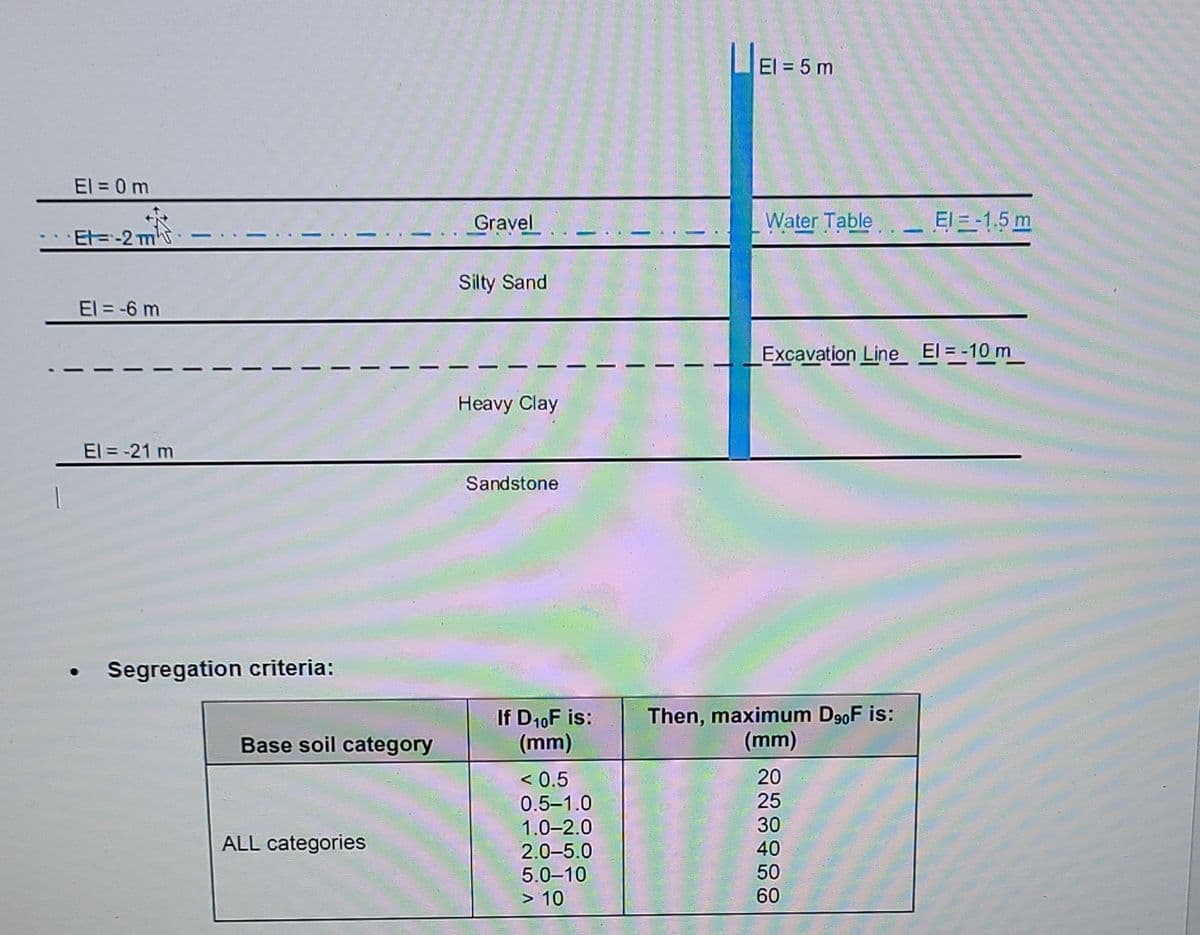A wide excavation is made on a site which has the following soil conditions: 0-2 m Gravel: gsat = 21.8 kN/m3, gdry = 18.5 kN/m3 2-6 m Silty sand: gsat = 19.6 kN/m3, gdry = 18.4 kN/m3 6-21 m Heavy Clay: gt = 20 kN/m3 21 m and below: PERVIOUS sandstone The water table is at a depth of 1.5 m below the ground level. The piezometric pressure head at the top of the pervious sandstone is 5 m above the ground surface. If an excavation of depth 10 m is required, and a factor of safety of 1.5 against heave at the bottom of the clay layer is set, calculate the pressure head reduction required in sandstone.
A wide excavation is made on a site which has the following soil conditions:
0-2 m Gravel: gsat = 21.8 kN/m3, gdry = 18.5 kN/m3
2-6 m Silty sand: gsat = 19.6 kN/m3, gdry = 18.4 kN/m3
6-21 m Heavy Clay: gt = 20 kN/m3
21 m and below: PERVIOUS sandstone
The water table is at a depth of 1.5 m below the ground level. The piezometric pressure head at the top of the pervious sandstone is 5 m above the ground surface.
If an excavation of depth 10 m is required, and a factor of safety of 1.5 against heave at the bottom of the clay layer is set, calculate the pressure head reduction required in sandstone.
![Filter Design Criteria (USBR 2011)
Base Soil Categories:
Percent finer than No. 200
sieve (0.075 mm) (after
regrading where applicable)
Base soil
category
Base soil description
1
> 85
Fine silts and clays
40 - 85
Silts, clays, silty sands, and clayey sands
Silty and clayey sands and gravels
Sands and gravels
3
15 - 39
4.
< 15
Note: mm = millimeter
Particle Retention Requirement:
Base soil
category
Filtering - Maximum D15F
The maximum D15F should be s 9 x
unless the soils are dispersive. Dispersive soils require a maximum
D15F that is s 6.5 x D85B size, but not less than 0.2 mm.
B, but not less than 0.2 mm,
1
The maximum D15F should be s0.7 mm unless soil is dispersive, in
which case the maximum D15F should be < 0.5 mm.
A. For nondispersive soils, the maximum D15F should be:
40- A
[(4xDs5B)-0.7mm] + 0.7mm
854
25
where:
A = Percent passing No. 200 sieve.
When 4 x DasB is less than 0.7 mm, use 0.7 mm
B. For dispersive soils, use 0.5 mm.
4
The maximum D15F should be s 4 x D85B of base soil after regrading.
Permeability Requirement:
D15F > 5 x D15B, but not less than 0.1 mm
Maximum and minimum particle size criteria:
Base soil category
Maximum D100F
Minimum D5F
ALL categories
<2 inches
0.075 mm
(51 mm)
(No. 200 sieve)
3.](/v2/_next/image?url=https%3A%2F%2Fcontent.bartleby.com%2Fqna-images%2Fquestion%2Fb347987a-df3b-40b4-ae0b-f956b4f25ef7%2F6d8a5a39-e402-4e21-b2f9-1efc72c34ba0%2F0g8oo3_processed.jpeg&w=3840&q=75)

Trending now
This is a popular solution!
Step by step
Solved in 2 steps with 1 images









